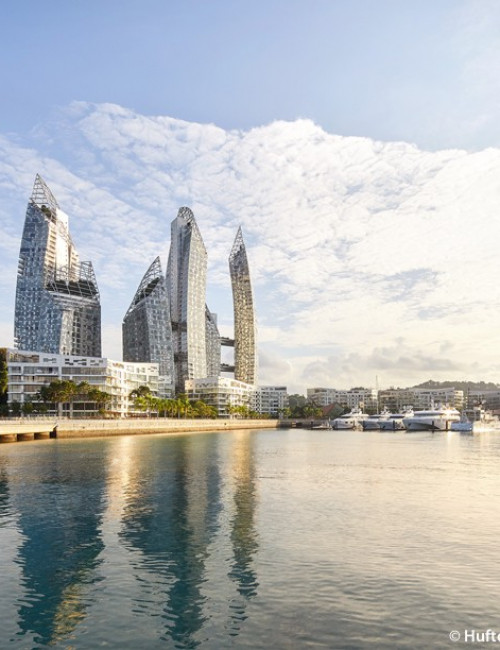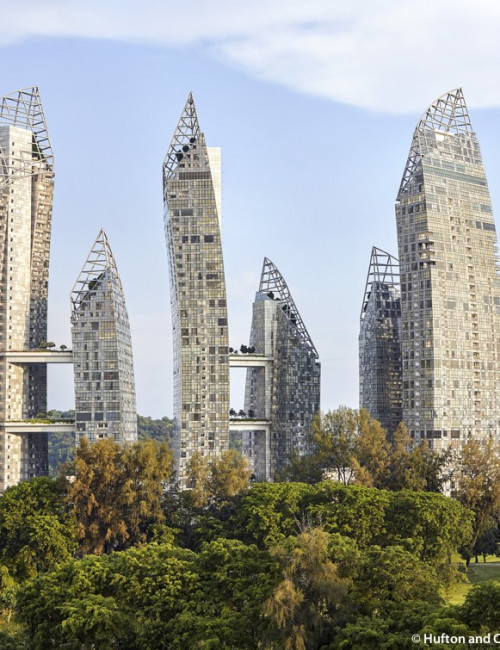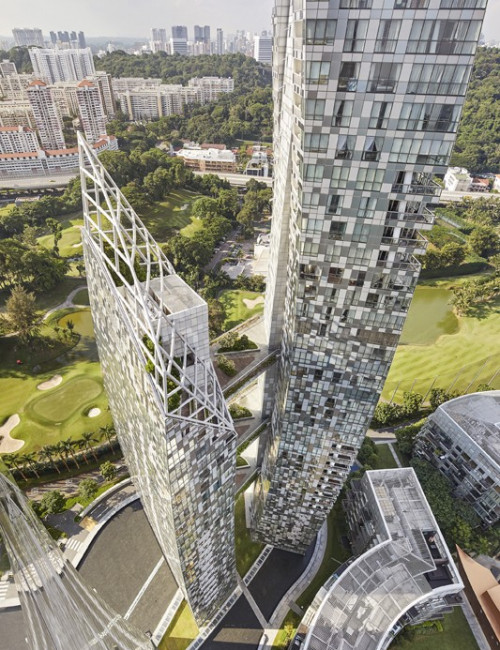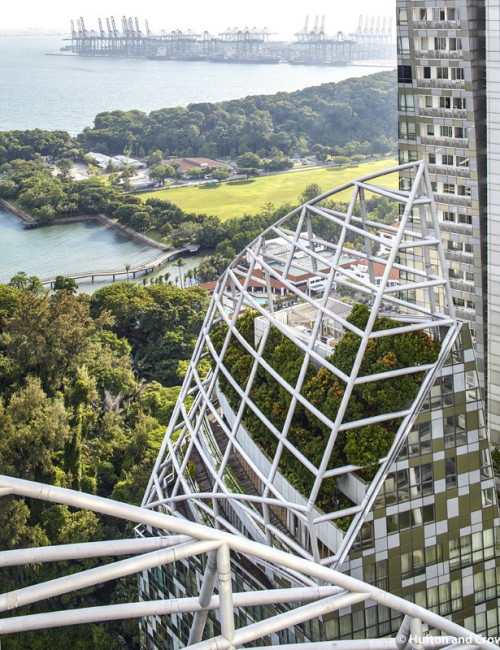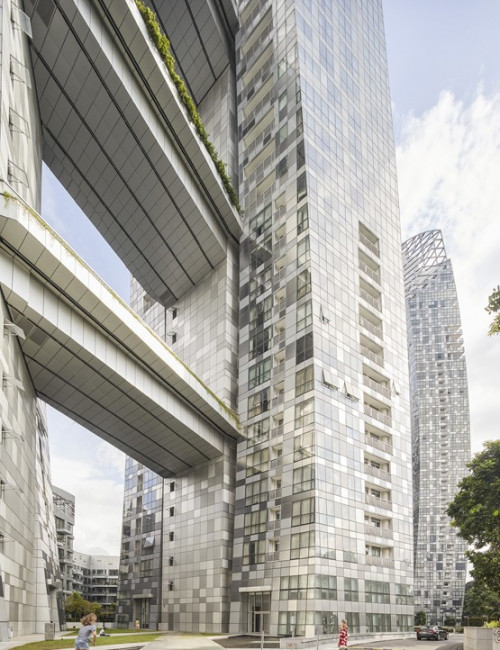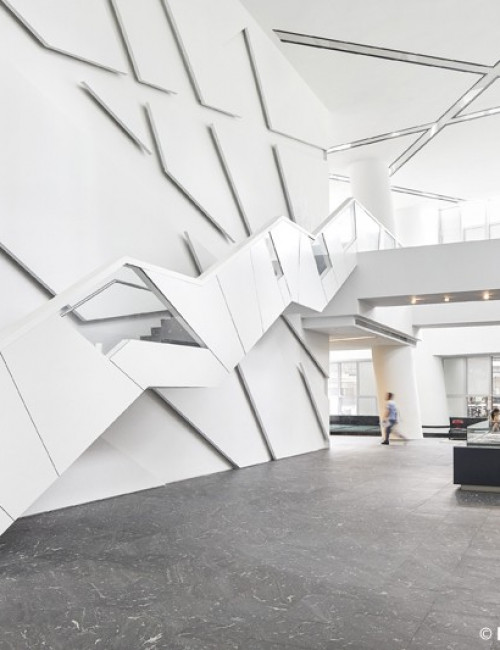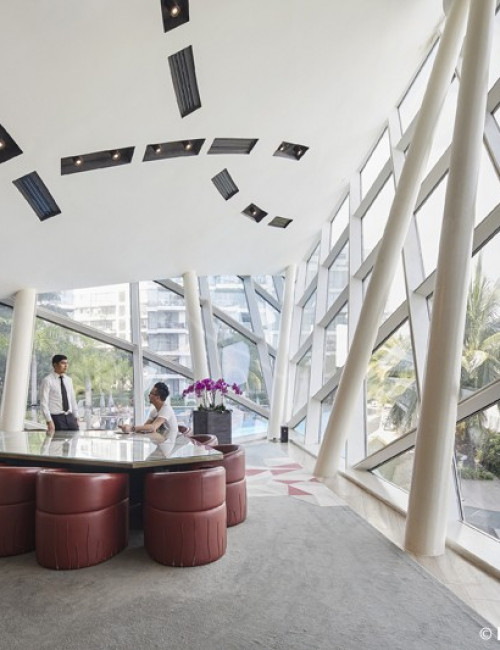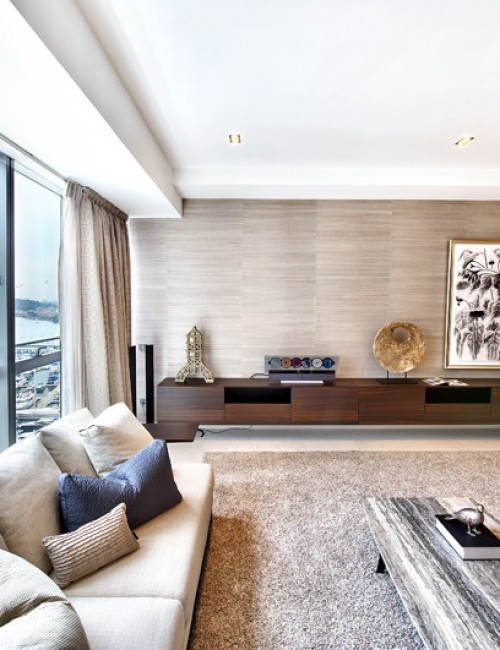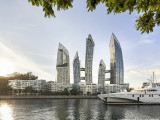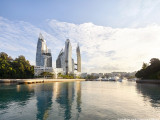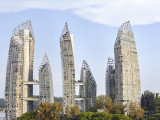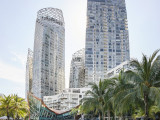Height rank
Reflections at Keppel Bay Tower 1A
Singapore
- Facts
-
Metrics
You must be a CTBUH Member to view this resource.
Official Name
Reflections at Keppel Bay Tower 1A
Name of Complex
Type
Building
Status
Completed
Completion
2011
Country
City
Address
Function
A mixed-use tall building contains two or more functions (or uses), where each of the functions occupy a significant proportion of the tower's total space. Support areas such as car parks and mechanical plant space do not constitute mixed-use functions. Functions are denoted on CTBUH "Tallest Building" lists in descending order, e.g., "hotel/office" indicates hotel function above office function.
Residential
Structural Material
Both the main vertical/lateral structural elements and the floor spanning systems are constructed from steel. Note that a building of steel construction with a floor system of concrete planks or concrete slab on top of steel beams is still considered an “all-steel” structure as the concrete elements are not acting as the primary structure.
All-Concrete
Both the main vertical/lateral structural elements and the floor spanning systems are constructed from concrete which has been cast in place and utilizes steel reinforcement bars and/or steel reinforced concrete which has been precast as individual components and assembled together on-site.
All-Timber
Both the main vertical/lateral structural elements and the floor spanning systems are constructed from timber. An all-timber structure may include the use of localized non-timber connections between timber elements. Note that a building of timber construction with a floor system of concrete planks or concrete slab on top of timber beams is still considered an “all-timber” structure as the concrete elements are not acting as the primary structure.
Mixed-Structure
Utilizes distinct systems (e.g. all-steel, all-concrete, all-timber), one on top of the other. For example, a Steel Over Concrete indicates an all-steel structural system located on top of an all-concrete structural system, with the opposite true of Concrete Over Steel.
Composite
A combination of materials (e.g. steel, concrete, timber) are used together in the main structural elements. Examples include buildings which utilize: steel columns with a floor system of reinforced concrete beams; a steel frame system with a concrete core; concrete-encased steel columns; concrete-filled steel tubes; etc. Where known, the CTBUH database breaks out the materials used within a composite building’s primary structural elements.
All-Concrete
Energy Label
BCA Green Mark Gold
Official Website
Height
174.2 m / 571 ft
Floors Above Ground
40
Floors Below Ground
2
Top Elevator Speed
3 m/s
Tower GFA
186,806 m² / 2,010,763 ft²
Rankings
-
By function
You must be a CTBUH Member to view this resource.
-
By material
You must be a CTBUH Member to view this resource.
Construction Schedule
Proposed
Construction Start
Completed
Architect
Usually takes on the balance of the architectural effort not executed by the "Design Architect," typically responsible for the construction documents, conforming to local codes, etc. May often be referred to as "Executive," "Associate," or "Local" Architect, however, for consistency CTBUH uses the term "Architect of Record" exclusively.
MEP Engineer
The Design Engineer is usually involved in the front end design, typically taking the leadership role in the Schematic Design and Design Development, and then a monitoring role through the CD and CA phases.
Other Consultant
Other Consultant refers to other organizations which provided significant consultation services for a building project (e.g. wind consultants, environmental consultants, fire and life safety consultants, etc).
Other Consultant refers to other organizations which provided significant consultation services for a building project (e.g. wind consultants, environmental consultants, fire and life safety consultants, etc).
These are firms that consult on the design of a building's façade. May often be referred to as "Cladding," "Envelope," "Exterior Wall," or "Curtain Wall" Consultant, however, for consistency CTBUH uses the term "Façade Consultant" exclusively.
Material Supplier
Material Supplier refers to organizations which supplied significant systems/materials for a building project (e.g. elevator suppliers, facade suppliers, etc).
Material Supplier refers to organizations which supplied significant systems/materials for a building project (e.g. elevator suppliers, facade suppliers, etc).
You must be a CTBUH Member to view this resource.
Owner/Developer
Keppel Land International Ltd
Architect
Usually involved in the front end design, with a "typical" condition being that of a leadership role through either Schematic Design or Design Development, and then a monitoring role through the CD and CA phases.
Studio Daniel Libeskind
Usually takes on the balance of the architectural effort not executed by the "Design Architect," typically responsible for the construction documents, conforming to local codes, etc. May often be referred to as "Executive," "Associate," or "Local" Architect, however, for consistency CTBUH uses the term "Architect of Record" exclusively.
Structural Engineer
The Design Engineer is usually involved in the front end design, typically taking the leadership role in the Schematic Design and Design Development, and then a monitoring role through the CD and CA phases.
T.Y. Lin international
MEP Engineer
The Design Engineer is usually involved in the front end design, typically taking the leadership role in the Schematic Design and Design Development, and then a monitoring role through the CD and CA phases.
Contractor
The main contractor is the supervisory contractor of all construction work on a project, management of sub-contractors and vendors, etc. May be referred to as "Construction Manager," however, for consistency CTBUH uses the term "Main Contractor" exclusively.
Woh Hup Pte Ltd
Other Consultant
Other Consultant refers to other organizations which provided significant consultation services for a building project (e.g. wind consultants, environmental consultants, fire and life safety consultants, etc).
Other Consultant refers to other organizations which provided significant consultation services for a building project (e.g. wind consultants, environmental consultants, fire and life safety consultants, etc).
These are firms that consult on the design of a building's façade. May often be referred to as "Cladding," "Envelope," "Exterior Wall," or "Curtain Wall" Consultant, however, for consistency CTBUH uses the term "Façade Consultant" exclusively.
Fast Flow Systems Pte Ltd
Material Supplier
Material Supplier refers to organizations which supplied significant systems/materials for a building project (e.g. elevator suppliers, facade suppliers, etc).
Material Supplier refers to organizations which supplied significant systems/materials for a building project (e.g. elevator suppliers, facade suppliers, etc).
JORDAHL
CTBUH Awards & Distinctions
Best Tall Building, by Region, Asia & Australasia 2012 Award of Excellence
2012 CTBUH Awards
About Reflections at Keppel Bay Tower 1A
Sited on the scenic Keppel Harbor in Singapore, the Reflections at Keppel Bay complex took its inspiration from the strong elemental forces of the area. Surrounded by water and the lush vegetation of the region, the six towers of the complex seek to provide not only views from each of its residential units to the natural beauty beyond, but to also create an intriguing formal juxtaposition between the towers and their surroundings.
The project brief required that the development achieve a density to meet the client’s goals on the available site, as real-estate costs in Singapore are high. To meet the number of desired units, a set of differing typologies was developed to provide variety in the design and create a unique development while creating a dense complex. Eleven low-rise villas of 6–8 floors each occupy part of the site, creating a gradient to the height of the towers. The tower pairs are united with sky decks to provide green space and facilitate connections between them.
The nine sky decks in the complex range from 15 to 24 meters in span, and are full-story trussed steel matrix construction which were assembled at ground level and were strand-jacked in sequence from the highest to the lowest level, to finally maneuver the structures into place. The decks are landscaped, connecting them with the densely planted environment around it and providing a unique experience of a garden in the sky for residents.
The forms and materials of the towers are intended to respond to the surrounding water and air, reflecting back the environment. The crown of each tower is made up of a complex lattice which evaporates into the air, creating a connection between the tower and the sky around it. Each crown, approximately 40 meters in height, is created from cold-rolled tubular steel sections. Within the crown structures are housed three levels of sky gardens that are integrated with the penthouse units. The façade treatment is of varying reflectivity, creating a stippled effect along each surface, much like the water around it.
The artful composition of ever-shifting building orientations, along with the differing building typologies, creates an airy, light-filled grouping of short and tall structures. These forms create an experience where each level feels unique as it is not in alignment with either the floor above or below. There are no residence types which are placed next to one another or seen from the same perspective; the result of this design is a fundamental shift in high-rise living where individuality and difference is not sacrificed.
Comprising more than 1,100 units, the complex is a neighborhood, and the architecture is intended to create a community for its residents. To support the community in a sustainable manner, several conservation measures were taken: energy-efficient lighting and appliances were installed; a rainwater harvesting system is used for irrigation; motion sensors and automatic plumbing fixtures were installed in public spaces; and a large amount of softscaping was employed to reduce heat reflection and improve rainwater collection, which was also in alignment with the goals of integrating the buildings with their context. The project earned Singapore’s Green Mark Gold Award through its implementation of sustainable strategies.
CTBUH Awards & Distinctions
Best Tall Building, by Region, Asia & Australasia 2012 Award of Excellence
2012 CTBUH Awards
Subscribe below to receive periodic updates from CTBUH on the latest Tall Building and Urban news and CTBUH initiatives, including our monthly newsletter. Fields with a red asterisk (*) next to them are required.
View our privacy policy


